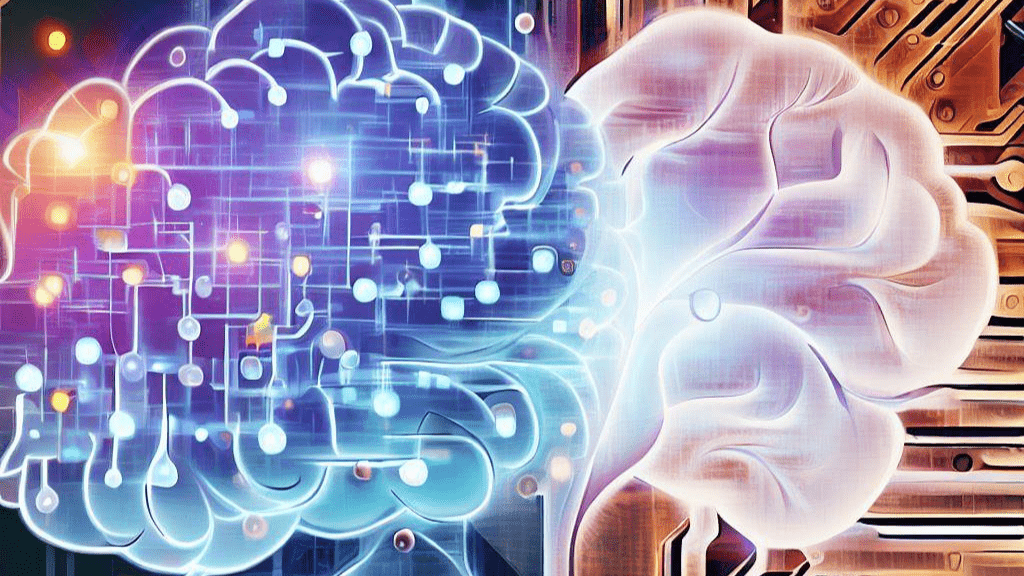
In a monumental leap toward achieving energy-efficient computing systems that mirror the intricate functions of the human brain, researchers have uncovered a groundbreaking discovery involving quantum materials. Recent findings showcase the emergence of a phenomenon known as ‘non-locality’ within quantum materials, wherein electrical signals transmitted between neighboring electrodes exert influence on non-neighboring electrodes. This discovery has the potential to usher in a new era of computing characterized by remarkable efficiency and minimal energy consumption.
1. Bridging the Gap: Brain vs. Computers
The realm of computing, while unparalleled in speed and precision, struggles to replicate the brain’s extraordinary ability to process vast layers of information with minimal energy input. Tasks that seem elementary to humans, such as recognizing faces or distinguishing between objects, often demand significant computational power, yielding varying degrees of success. This quest to achieve brain-like efficiency in computing has given rise to the field of neuromorphic computing, aimed at emulating the brain’s intricate functionality.
2. Pioneer in Brain-Inspired Computing
At the forefront of this groundbreaking research is the Quantum Materials for Energy Efficient Neuromorphic Computing (Q-MEEN-C) consortium. Led by the University of California San Diego and generously funded by the Department of Energy, this collaborative effort has been spearheaded by Assistant Professor of Physics Alex Frañó. The consortium’s unwavering dedication to exploring quantum materials’ potential in energy-efficient computing has yielded remarkable progress.
3. Emulating Brain Elements with Quantum Materials
The consortium’s journey commenced with the collaboration of Alex Frañó, Professor of Physics Robert Dynes, and Engineering Professor Shriram Ramanathan. Together, they embarked on replicating brain elements like neurons and synapses using quantum materials. This pivotal groundwork laid the foundation for their recent breakthrough.
4. Unveiling Non-Local Interactions
A groundbreaking discovery, documented in Nano Letters, has unveiled the capacity of electrical stimuli to traverse between neighboring electrodes and influence electrodes beyond their immediate neighbors. This phenomenon, termed non-locality, strikingly resembles the interactions observed within the human brain—interactions that are both energy-efficient and frequent. Frañó highlights the rarity of such behavior in synthetic materials, underscoring the significance of this discovery.
5. A Pandemic-Inspired Revelation
Interestingly, the inception of the idea to explore non-locality within quantum materials occurred during the pandemic. As physical lab spaces remained inaccessible, the team turned to simulations on arrays that mimicked brain elements. These simulations offered insights into the theoretical feasibility of non-local interactions. As lab facilities reopened, the concept was refined and operationalized with the collaboration of Associate Professor Duygu Kuzum from UC San Diego Jacobs School of Engineering.
6. Creating Functional Quantum Material Devices
The practical implementation of this discovery involved utilizing a thin film of nickelate, a ceramic quantum material with rich electronic properties. By introducing hydrogen ions and layering a metal conductor atop the film, the researchers established a setup enabling electrical signals to be transmitted to the nickelate. This signal induced specific configurations in the hydrogen atoms, akin to memory storage.
7. Simplifying Circuit Design
Traditional electricity transport necessitates intricate circuits with continuous connections. In contrast, the Q-MEEN-C approach capitalizes on non-local behavior, enabling all circuit wires to influence each other without constant connection. This innovative design metaphorically parallels a spider web, where movement at one point resonates across the entire structure.
8. The Paradigm Shift in AI
The journey towards energy-efficient, brain-inspired computers requires the synergy of advanced hardware and software. Frañó envisions a revolutionary shift in artificial intelligence, where the hardware actively engages in learning processes. Supported by the Quantum Materials for Energy Efficient Neuromorphic Computing consortium, this research has far-reaching implications for the future of computing and AI.
9. An Era of Possibilities
In a realm where software’s potential is limited by hardware constraints, the breakthrough achieved by Q-MEEN-C shines as a beacon of hope. The pursuit of brain-inspired, energy-efficient computing has taken a colossal leap forward, inching closer to a new chapter in artificial intelligence.
In Conclusion:
The fusion of quantum materials and brain-inspired computing brings forth a realm of possibilities. The recent breakthrough unveiled by the Q-MEEN-C consortium represents a significant stride toward energy-efficient computing systems that emulate the brain’s intricate functions. As researchers endeavor to bridge the gap between human brain efficiency and computational power, the potential for revolutionizing artificial intelligence and computing is boundless.

Get the latest Crypto & Blockchain News in your inbox.